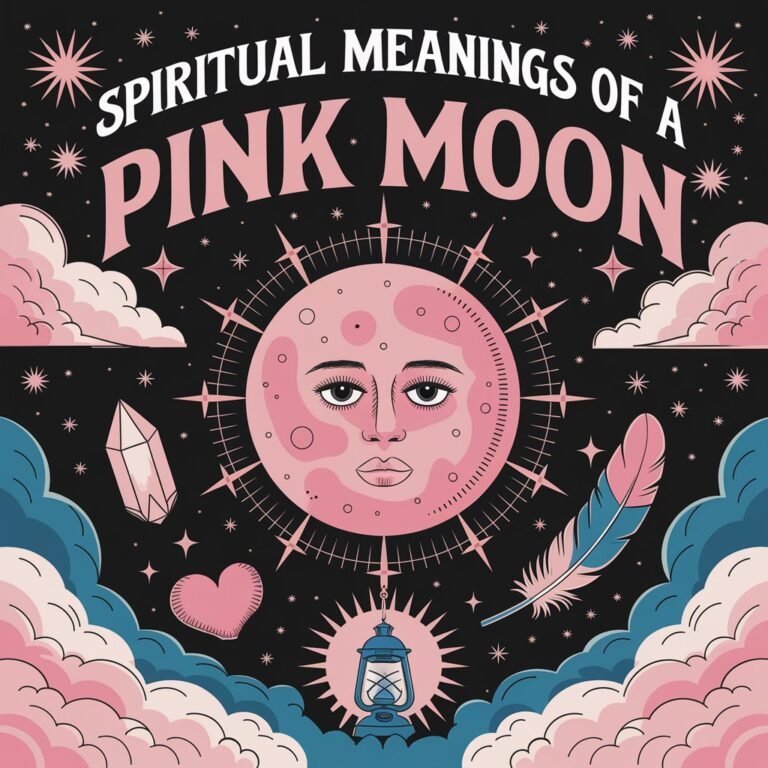Lotus Meaning and Symbolism: Exploring the Spiritual Connections
You've likely encountered the lotus symbol in various Eastern cultures and traditions, but have you ever stopped to ponder its deeper meaning and significance? As a symbol of spiritual growth and enlightenment, the lotus has been a revered and sacred emblem for thousands of years. With its roots firmly grounded in the muddy waters and its petals reaching for the sun, the lotus represents the soul's journey towards higher consciousness. But what lies beyond its surface-level beauty, and how can you tap into its transformative power in your own spiritual practice?
A Quick Overview
- The lotus symbolizes spiritual growth, rebirth, and regeneration in various cultures, including ancient Mesopotamia, Egypt, and Eastern societies.
- In Buddhism and Hinduism, the lotus represents the soul's journey towards enlightenment and spiritual awakening.
- The lotus is connected to the seven chakras, governing spiritual, emotional, and physical well-being, and awakens the Kundalini energy within.
- The colors of the lotus represent different aspects of human consciousness, including purity, love, compassion, wisdom, and spiritual awareness.
- The lotus inspires personal growth, self-improvement, and inner transformation, guiding spiritual practice and embodied qualities of resilience and strength.
Origins of the Lotus Symbol
As you explore into the mystical world of the lotus, you're likely to find yourself drawn into the depths of ancient history and the symbolic language of the Egyptians, Hindus, and Buddhists.
This enchanting flower has been a timeless symbol in various cultures, weaving its way through the fabric of human connection and spirituality.
In Ancient Mesopotamia, the lotus was revered as a sacred plant, often depicted in art and literature as a symbol of rebirth and regeneration.
The ancient Greeks also drew associations with the lotus, linking it to the myth of the Lotus-Eaters, who lived in a state of blissful forgetfulness.
In many Eastern cultures, the lotus represents the soul's journey towards enlightenment, with its roots in the muddy waters and its petals reaching for the sun, symbolizing growth and transformation.
As you reflect on the origins of the lotus symbol, you may begin to appreciate the rich tapestry of meaning that surrounds this majestic flower.
Buddhist Significance of the Lotus
The rich tapestry of the lotus's meaning becomes even more intricate when you explore its significance in Buddhist tradition.
You'll find that this sacred flower is often depicted in Buddhist art and literature as a symbol of spiritual growth and enlightenment. In Tibetan rituals, the lotus is considered a powerful representation of the Buddha's teachings, guiding individuals on their path to inner peace and liberation.
As you probe deeper, you'll discover that the lotus is also closely tied to Buddhist mantras and meditation practices.
The mantra "Om mani padme hum" is often recited while visualizing the lotus, symbolizing the connection between the spiritual and material worlds. This mantra embodies the lotus's transformative power, reminding you that even in the midst of chaos, you can cultivate inner peace and rise above the challenges.
Hinduism and the Sacred Lotus
Your spiritual journey through the lotus's symbolism takes another profound turn as you explore its significance in Hinduism, where this majestic flower is revered as a sacred symbol of divine connection.
In Hindu mythology, the lotus is often depicted as the seat of the gods, with the creator god, Brahma, emerging from a lotus that bloomed from the navel of the preserver god, Vishnu. This symbolic connection to the divine embodies the ultimate goal of Hindu spiritual practice: union with the divine.
The lotus is also associated with the chakras, or energy centers, in the body, with each petal corresponding to a specific chakra. This connection highlights the flower's role in spiritual growth and enlightenment.
The Lotus Mantra, "Om Mani Padme Hum," is a powerful invocation that embodies the spiritual essence of the lotus. By reciting this mantra, you can connect with the divine energy of the lotus and cultivate a deeper sense of inner peace and unity.
As you explore the symbolism of the lotus in Hinduism, you may find that your own spiritual journey is enriched and transformed.
Lotus Flower in Ancient Egypt
Egypt's sacred landscapes and mystical symbolism are deeply intertwined with the enigmatic lotus flower, which held a revered place in the hearts and minds of the ancient Egyptians. You find yourself drawn into a world where the boundaries between nature and the divine are blurred.
In Egyptian Cosmology, the lotus symbolizes creation, rebirth, and regeneration, echoing the eternal cycle of life.
As you explore the ancient temples and tombs, you notice the intricate carvings and paintings that adorn the walls of Sacred Architecture.
The lotus motif is omnipresent, often depicted in various stages of bloom, from the bud to the full flower. This progression represents the soul's journey toward enlightenment and spiritual awakening.
The lotus flower is also associated with the sun god, Atum, who rises from the primordial waters, much like the lotus itself.
As you reflect on the significance of the lotus in ancient Egyptian culture, you begin to appreciate the depth of their spiritual understanding and the profound connection they felt with the natural world.
Symbolism of the Lotus Colors
As you explore deeper into the symbolism of the lotus, you find that its colors hold a profound significance that can transform your understanding of this sacred flower.
The various hues of the lotus represent different aspects of human consciousness, inviting you to reflect on your spiritual journey.
In many Eastern cultures, the lotus is often depicted in flower arrangements that symbolize the harmony and balance that can be achieved through spiritual growth.
The colors of the lotus also carry distinct meanings in various cultural representations. The white lotus, for example, is often associated with purity, innocence, and spiritual awakening.
The pink lotus, on the other hand, represents love, compassion, and spiritual growth.
The blue lotus is a symbol of wisdom, intuition, and spiritual awareness.
As you explore the symbolism of the lotus colors, you begin to understand the depth of its cultural significance and the profound impact it can have on your spiritual path.
The colors of the lotus invite you to explore the depths of your own consciousness, encouraging you to grow, transform, and evolve.
Lotus and the Chakras Connection
Deep within the lotus flower, a profound connection awaits – a connection that links the petals of this sacred bloom to the very centers of your being. This mystical connection is rooted in the ancient understanding of the chakras, the seven energy centers that govern your spiritual, emotional, and physical well-being.
Just as the lotus has seven petals, each chakra is linked to a specific aspect of your being, from the root to the crown. As you journey through the lotus, you're invited to explore the corresponding chakras, awakening the Kundalini energy that lies dormant within.
This powerful force is said to reside at the base of the spine, waiting to be released through energy healing practices and spiritual disciplines. As you connect with the lotus, you're encouraged to tune into the subtle vibrations of each chakra, allowing for a deeper understanding of yourself and the world around you.
Lotus Meaning in Dreams and Art
The lotus flower's symbolism transcends the domain of wakefulness, seeping into the subconscious mind and influencing your dreams and artistic expressions. As you tap into the lotus's symbolic meaning, you may find it appearing in your dreams as a representation of spiritual growth, resilience, and transformation.
This imagery can be a powerful catalyst for self-reflection, inviting you to explore the depths of your own psyche and uncover hidden truths.
In the sphere of art, the lotus has long been a source of inspiration, symbolizing the human experience of rising above adversity and finding beauty in the midst of chaos. As you express yourself creatively, allow the lotus to guide you, embodying its qualities of strength, compassion, and wisdom.
Your artistic expression becomes a reflection of your inner world, an affirmation to the transformative power of the lotus. By embracing the lotus's symbolism in your dreams and art, you'll find a deeper sense of connection to yourself and the world around you, fostering a sense of belonging to something greater.
Lotus as a Spiritual Practice
How often do you seek spiritual growth in the stillness of a quiet morning, surrounded by nature's serenity?
As you cultivate a deeper connection with yourself and the world around you, the lotus flower can serve as a powerful symbol of your journey. Embracing the lotus as a spiritual practice involves integrating its symbolism into your daily life, allowing you to embody its qualities of resilience, growth, and spiritual evolution.
Incorporate meditation techniques into your daily routine, using the lotus as a focal point for your practice.
Visualize its petals unfolding, symbolizing the expansion of your consciousness and awareness.
Engage in mindfulness exercises, such as walking or yoga, while reflecting on the lotus's journey from muddy waters to radiant bloom.
As you practice, ask yourself: What areas of my life need nurturing and growth? How can I cultivate greater self-awareness and compassion?
Allow the lotus to guide you in your spiritual practice, and watch as your inner world transforms, just as the lotus transforms the world around it.
Frequently Asked Questions
Can I Use the Lotus Symbol in My Business Branding?
You're considering the lotus symbol for your business branding – a beautiful choice. Verify it aligns with your brand identity and exercise cultural sensitivity, as this symbol holds deep meaning in many Eastern cultures and traditions.
Are Lotus Flowers Edible or Safe for Consumption?
As you consider using lotus in your business or personal life, you might wonder if it's safe to eat. Some edible varieties exist, but beware of lotus toxicity in certain species, prioritizing your well-being.
How Do I Care for a Lotus Plant at Home?
As you nurture your lotus plant, you're cultivating life and connection. Guarantee soil requirements are met with a mix of clay and sand, and maintain ideal water levels, allowing 2-4 inches of water above the soil.
Can I Get a Lotus Tattoo Without Being Buddhist or Hindu?
You're considering a lotus tattoo, but wondering if it's respectful to adopt a symbol from another culture. Reflect on your personal connection to the lotus, and guarantee its significance aligns with your values, rather than appropriating its cultural context.
Are There Any Lotus Varieties With Medicinal Properties?
You're drawn to the lotus for its healing potential, and you're not alone. Research shows that lotus extracts have been used in Ayurvedic remedies for centuries, offering relief and balance for body and soul.

Sofia Phillips is a renowned spirituality expert and the visionary behind SoulfulCreature.com. With a compassionate heart and an enlightened mind, Sofia embarks on a quest to guide others through the realms of spirituality. Her approach is deeply rooted in providing a nurturing and positive experience, allowing individuals to explore and grow in their spiritual journey.






